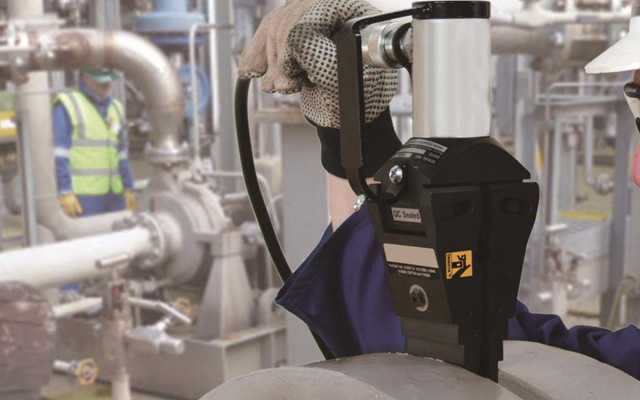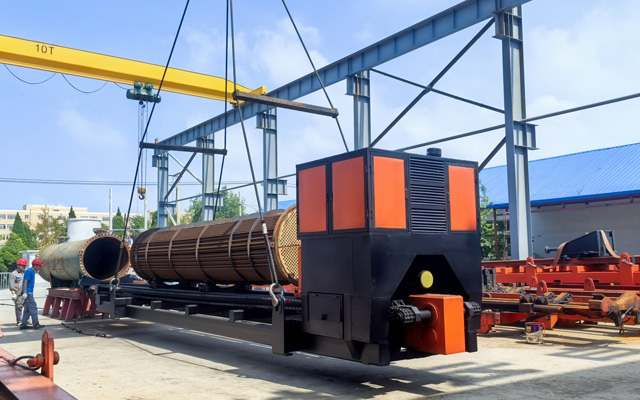In the modern industrial system, the petrochemical industry plays a pivotal role, providing crucial energy and basic materials for global economic development. And petrochemical maintenance and repair, as the unsung heroes ensuring the continuous, safe and efficient operation of this huge industry, is of self-evident importance.
The complexity and danger of petrochemical production impose extremely high requirements on the reliability of equipment. From drilling equipment and oil production platforms in the oil and gas exploration and production stage, to atmospheric and vacuum distillation units and catalytic cracking units in the oil refining process, to various reactors and distillation columns in the chemical synthesis field, as well as the pipeline systems and storage and transportation facilities throughout, the equipment in each link operates under harsh environments such as high temperature, high pressure and strong corrosion for a long time. For example, the internal pressure of a hydrogenation reactor in a refinery can reach dozens of megapascals, with a temperature as high as several hundred degrees Celsius, while also withstanding the strong corrosive effect of hydrogen. The furnace tubes of the cracking furnace in an ethylene production unit face the scouring and coking problems caused by high-temperature cracking feedstock. Under such working conditions, the performance of the equipment gradually deteriorates, and damages such as material fatigue, wear and corrosion accumulate continuously. If they cannot receive timely and effective maintenance and repair, it is extremely easy to trigger disastrous accidents such as leakage, explosion and fire, which will not only cause huge economic losses but also pose a serious threat to the safety of human lives and the ecological environment.
Petrochemical maintenance and repair work covers a wide range of contents and professional fields. Preventive maintenance is a key link. Through regular inspections, equipment condition monitoring and data analysis, maintenance personnel can detect potential failure risks of equipment in advance and take targeted maintenance measures, such as equipment cleaning, lubrication, tightening, adjustment and replacement of wearing parts. With the help of advanced sensor technology and online monitoring systems, the operating parameters of equipment, such as vibration, temperature, pressure and flow, can be collected in real time, and these data can be processed by using big data analysis and artificial intelligence algorithms to accurately predict the remaining service life of the equipment and the possible types of failures, thus realizing the transformation from traditional “breakdown maintenance” and “scheduled maintenance” to “predictive maintenance”, greatly improving the reliability and availability of the equipment and reducing maintenance costs and production risks.
When equipment fails, the ability of rapid response in fault diagnosis and emergency repair is crucial. The maintenance team needs to quickly arrive at the scene, use rich experience and professional detection means, such as non-destructive testing techniques (including ultrasonic testing, radiographic testing, magnetic particle testing, etc.), physical and chemical property analysis and fault tree analysis method, to accurately determine the root cause and influence range of the fault. Then, a detailed emergency repair plan is formulated and efficient repair operations are organized and implemented, including the removal, repair or replacement of damaged parts, the commissioning and trial operation of the equipment. During the entire emergency repair process, time is of the essence. Every minute of delay may lead to a further expansion of production losses. Therefore, maintenance personnel must race against time while also ensuring the quality of repairs and the safety of operations, strictly abiding by relevant safety operation procedures and standard specifications to prevent secondary accidents caused by negligence during the emergency repair process.
In addition to routine maintenance and emergency repair, petrochemical maintenance and repair also involve regular overhaul and technological transformation and upgrading of equipment. Regular overhaul is to carry out comprehensive disassembly, inspection, cleaning, repair and commissioning of equipment according to the established overhaul cycle to restore the performance and accuracy of the equipment and ensure its safe and reliable operation in the next operating cycle. During the overhaul process, detailed detection and maintenance will be carried out on the mechanical parts, electrical systems and instrument control systems of the equipment. Parts that are severely worn, deformed or aged will be replaced. The lubrication systems, cooling systems and sealing systems of the equipment will be comprehensively inspected and optimized. Meanwhile, the overall performance of the equipment will be tested and evaluated to ensure that all its performance indicators meet the design requirements and production process standards.
With the continuous progress of science and technology and the continuous development of the petrochemical industry, higher and higher requirements are put forward for maintenance and repair technologies and processes. Nowadays, advanced repair technologies are emerging continuously. For example, laser cladding technology can repair the worn and corroded surfaces with high precision without changing the base material of the parts, making them recover or even exceed their original performance. Nanometer electro-brush plating technology can achieve rapid and uniform plating on tiny parts, improving their surface hardness, wear resistance and corrosion resistance. In addition, virtual reality (VR) and augmented reality (AR) technologies are gradually applied in the fields of equipment repair training and remote guidance. By creating realistic virtual repair scenes, maintenance personnel can conduct simulated operation exercises in the virtual environment to improve their repair skills and efficiency. Meanwhile, during the actual repair process, remote experts can use AR technology to view the on-site situation in real time and provide precise guidance and suggestions for maintenance personnel to solve complex technical problems.
Petrochemical maintenance and repair is not only a technology-intensive job but also a field that requires a high sense of responsibility and team spirit. From front-line maintenance workers and technicians to managers of maintenance projects, every link is closely connected and they work together to ensure the stable operation of petrochemical production. Maintenance personnel need to continuously learn and master new technical knowledge and skills to cope with the increasingly complex and changeable equipment failures and maintenance needs. Managers should coordinate maintenance resources as a whole and arrange maintenance plans reasonably to ensure the efficient and orderly development of maintenance work. Meanwhile, enterprises also need to strengthen cooperation and exchanges with equipment manufacturers, scientific research institutions and professional maintenance service providers to jointly promote the innovation and development of petrochemical maintenance and repair technologies and improve the equipment management level and maintenance guarantee ability of the entire industry.
In conclusion, petrochemical maintenance and repair, as an important supporting link of the petrochemical industry, is of vital significance for ensuring production safety, improving production efficiency, reducing production costs, promoting the sustainable development of enterprises and maintaining national energy security. Only by continuously strengthening the research and development and application of maintenance and repair technologies, cultivating a high-quality professional talent team and establishing a sound maintenance and repair management system and quality assurance system can we build a solid foundation for the stable development of the petrochemical industry in the increasingly fierce market competition and complex and changeable industry environment and help it move towards a more efficient, safe, green and intelligent future.








